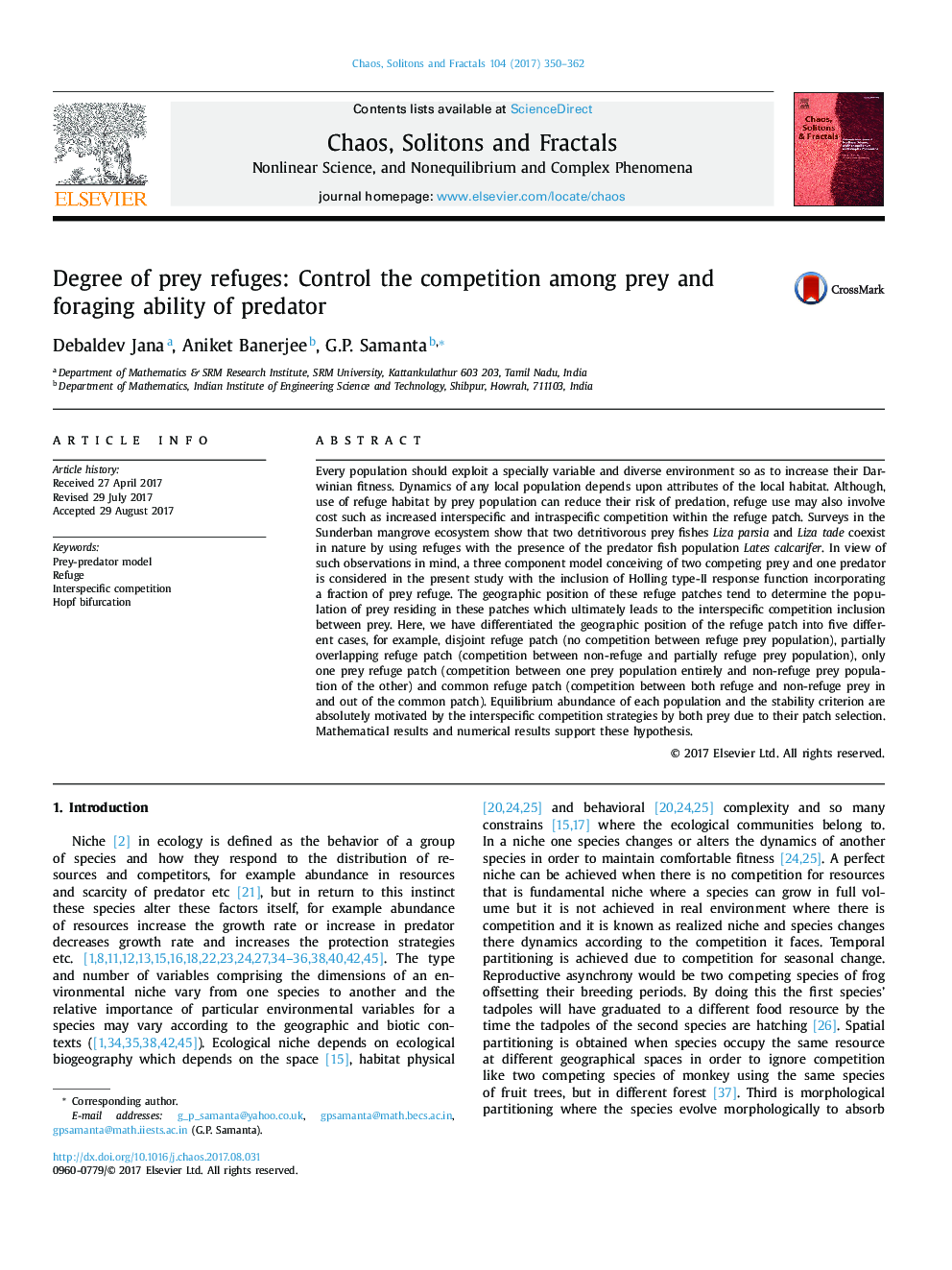| Article ID | Journal | Published Year | Pages | File Type |
|---|---|---|---|---|
| 5499486 | Chaos, Solitons & Fractals | 2017 | 13 Pages |
Abstract
Every population should exploit a specially variable and diverse environment so as to increase their Darwinian fitness. Dynamics of any local population depends upon attributes of the local habitat. Although, use of refuge habitat by prey population can reduce their risk of predation, refuge use may also involve cost such as increased interspecific and intraspecific competition within the refuge patch. Surveys in the Sunderban mangrove ecosystem show that two detritivorous prey fishes Liza parsia and Liza tade coexist in nature by using refuges with the presence of the predator fish population Lates calcarifer. In view of such observations in mind, a three component model conceiving of two competing prey and one predator is considered in the present study with the inclusion of Holling type-II response function incorporating a fraction of prey refuge. The geographic position of these refuge patches tend to determine the population of prey residing in these patches which ultimately leads to the interspecific competition inclusion between prey. Here, we have differentiated the geographic position of the refuge patch into five different cases, for example, disjoint refuge patch (no competition between refuge prey population), partially overlapping refuge patch (competition between non-refuge and partially refuge prey population), only one prey refuge patch (competition between one prey population entirely and non-refuge prey population of the other) and common refuge patch (competition between both refuge and non-refuge prey in and out of the common patch). Equilibrium abundance of each population and the stability criterion are absolutely motivated by the interspecific competition strategies by both prey due to their patch selection. Mathematical results and numerical results support these hypothesis.
Related Topics
Physical Sciences and Engineering
Physics and Astronomy
Statistical and Nonlinear Physics
Authors
Debaldev Jana, Aniket Banerjee, G.P. Samanta,
